Introduction to Egyptian God Anubis
Anubis (or Anpu or Inpu in Egyptian language; Greek form – ‘Anubis’) is one of the most frequently represented deities in Egyptian mythology (and Egyptian history). By virtue of the enigmatic visual flair, the ancient Egyptian god was represented as a jackal-headed entity associated with the rites of embalming the deceased and the related afterlife.
Now in spite of this popular modern visual motif, from the historical perspective, Anubis is one of the oldest deities among the numerous Egyptian gods. In fact, his name appears in the mastabas (royal tombs) dating from the First Dynasty Period, circa 32nd – 29th century BC. Anubis was also mentioned in the Pyramid Texts, the earliest known Egyptian religious texts, dating from circa 2400 BC.
To that end, in this article, we will focus on the origins and mythology related to the 5,000-year-old God of the Underworld (and later the god of mummification).
Contents
Depictions of Anubis
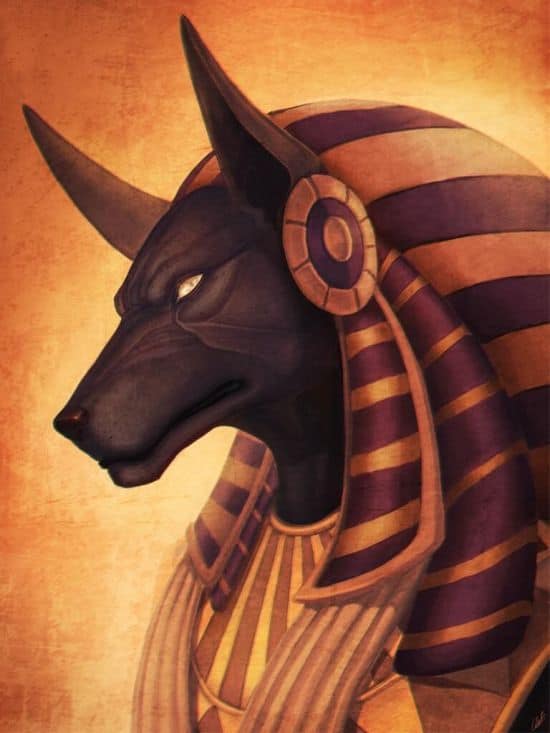
According to one hypothesis, the earlier places of burials, cemeteries, and shallow graves along the desert, during the preDynastic period (before 3150 BC), were popular haunts for the roving wild dogs and jackals. Consequently, solid structures like tombs were possibly built to ‘guard’ the dead against such creatures.
This essentially tied in the visual aspect of the canines to the scope of the dead and funerary practices. To that end, the Anubis was conceived as a rather muscular man with the head of a jackal (sAb) or a wild dog (iwiw), or a hybrid of both, while also showcasing his characteristic black fur and pointed ears.
Simply put, a ‘super canid’ entity, possibly also associated with the jackal god Wepwawet (or Upuaut– another deity of Upper Egypt with canine features but with grey fur), was conceived by the ancient Egyptians. This entity from Egyptian mythology was tasked with metaphorically protecting the dead from the other canines.
Interestingly enough, as many tomb paintings showcase, the black color of Anubis is conspicuously different from the brownish hue of the desert jackal, thus alluding to symbolism. For example, the color black symbolized both the body’s decay (along with the soul’s desolation) and the Nile’s fertile soil.
Origins and History of Anubis
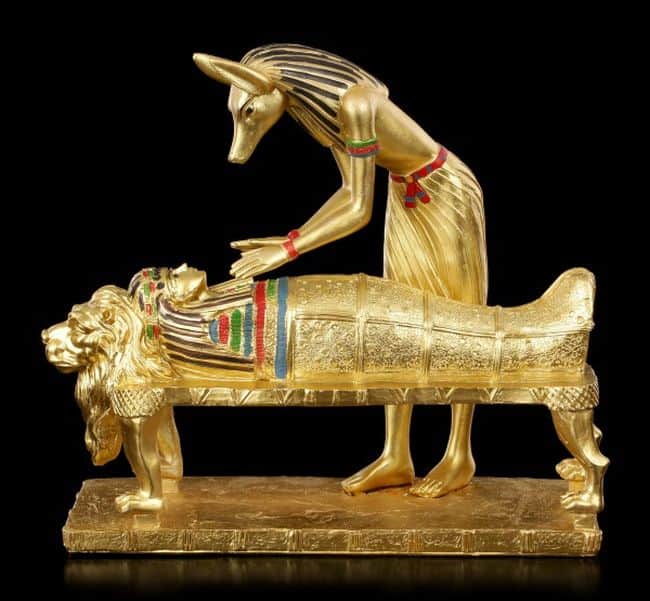
We fleetingly touched upon the possible roots of Anubis as the god of the dead. Now taking the etymological route, Anubis’ original Egyptian moniker is possibly derived from ‘inpu’ – which signifies both a ‘royal child’ and ‘to decay’, with the latter meaning probably alluding to his association with the dead.
In fact, by circa 3rd millennium BC, Anubis was given many epithets, like ‘First of the Westerners’ (or khentyamentiu) – a term basically reserved for the King of the Dead (and arbiter of eternal justice) since the souls departing towards the direction of sunset were referred to as ‘westerners’. One of his other names ‘Lord of the Sacred Land’ implies how the necropolis was considered the ‘sacred land’ of Egypt.
Other more seemingly complicated titles include the ‘Ruler of the Nine Bows’ – with ‘nine bows’ referring to the submitting traditional enemies of Egypt, and ‘The Dog Who Swallows Millions’ – basically alluding to his death aspect.
What historians have gathered from such honorable (and even macabre) epithets is how Anubis was the principal deity associated with the funerary rituals of ancient Egypt. In fact, during both the Early Dynastic and the Old Kingdom period (i.e., before the advent of the Middle Kingdom), circa 3150 – 2181 BC, Anubis was probably perceived as the central mythical figure – who oversaw every passage of the dead, with his prescribed divine role as the protector, judge, and guide of the departed souls.
Quite intriguingly, in spite of his venerated status in ancient Egypt, archaeologists have not been able to unearth even a single large temple or precinct dedicated to Anubis. On the other hand, researchers have found pieces of evidence that suggest there were shrines and mastaba inscriptions for the jackal-headed god, with his major cult centers possibly located at Asyut (Lycopolis) and Hardai (Cynopolis).
The site of Anubeion, in proximity to Saqqara, the burial ground of Memphis, revealed remnants of thousands of dog mummies, which does allude to the sheer scale of worshipping Anubis.
Lineage and Myths of Anubis
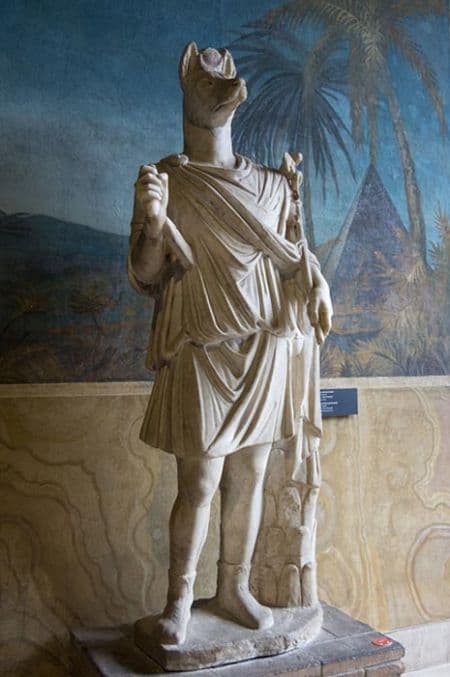
In the aforementioned era before the Middle Kingdom, encompassing almost a millennium (circa 3150 – 2181 BC), Anubis was probably venerated as one of the oldest gods related to the older Ogdoad pantheon of Hermopolis (Khmunu).
In this mythical scope, the God Anubis was presented as the son of Ra and Hesat (a feminine deity related to Hathor, the mother goddess). However, with the advent of the Middle Kingdom (post circa 1975 BC) and the consequent revival of the Ennead pantheon of Heliopolis (Iunu), Anubis was rather demoted in terms of his importance.
Part of it had to do with the famous Osiris myth that clearly pushed forth the narrative of Osiris being the lord of the underworld (or god of the dead). Such titles hinted at the enhanced eminence of Osiris. Consequently, during the Middle Kingdom period, Osiris (instead of Anubis) was perceived as the Judge of the Dead as well as the central figure who decided the deceased’s fate after the Weighing of the Heart ceremony.
In that regard, the Anubis myth was ‘rewritten’ to fit into the Osiris myth, thereby presenting how Anubis was supposedly the son of Osiris and his sister-in-law Nephthys (she disguised herself as Isis, the wife of Osiris, to entice the god), but was brought up by the benevolent Isis. In some myths, Anubis intentionally gives up his power to be the “right-hand man” of Osiris.
Quite fascinatingly, over time, Anubis continued to be worshipped through a unique scope of cultural syncretism. For example, during the Ptolemaic Greek period, Anubis, the guide of the dead, was ‘merged’ with Hermes, the Greek messenger god, to form the composite deity of Hermanubis (pictured above). Egyptologist Salima Ikram further mentioned –
[Anubis] became associated with Charon in the Graeco-Roman period and St. Christopher in the early Christian period…It is probable that Anubis is represented as a super-canid, combining the most salient attributes of several types of canids, rather than being just a jackal or a dog.
Attributes of Anubis
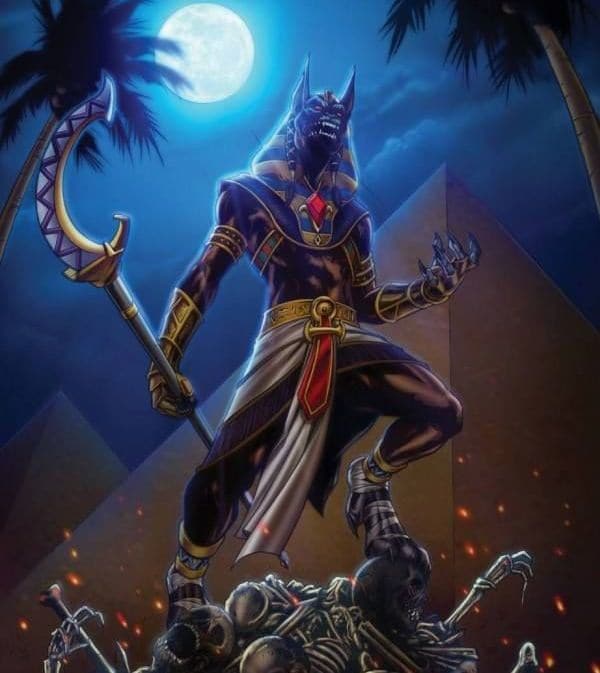
Anubis was often intrinsically related to the rites associated with death (including mummification rituals) – so much so that he was even responsible for embalming the gods. For example, in one myth, he aided the goddess Isis to embalm Osiris. Thus he was given the epithet ‘Foremost of the Divine Booth’, which suggested the embalming booth that he presided over.
Anubis also played the role of the deity who ushered souls into the Afterlife – epitomized by his epithet ‘The Master of Secrets’, the one who knew what waited beyond death. And since Egyptians believed in the concept of order and balance (Ma’at), death was perceived as an important journey of the soul – thereby suggesting the value of Anubis as an important god in the funerary contexts.
And while the prevalence of the Osiris Myth during the Middle Kingdom rather overshadowed Anubis’ role as the supreme judge and protector of souls in the Afterlife, the narrative did imply how Anubis certainly aided Osiris during the embalming process. Hence, Anubis became the patron god of embalmers and priests who took part in the funeral processes. As scholar Richard H. Wilkinson wrote –
Masks of the god are known, and priests representing Anubis at the preparation of the mummy and the burial rites may have worn these jackal-headed masks in order to impersonate the god; they were certainly utilized for processional use as this is depicted representationally and is mentioned in late texts.
Over the course of centuries, in the ancient Egyptian myth-based narrative, Anubis was presented as a rather ‘neutral’ but vengeful divine being who commanded an army of messengers to protect the necropolises and tombs of the realm. This certainly matches his origins relating to the early burial grounds.
For example, one particular lore mentions how Anubis angrily branded the evil god Set with a hot iron, who was disguised as a leopard to approach the body of Osiris, thereby endowing all future leopards with black spots.
And lastly, Anubis also became the patron of lost souls, including orphans. This possibly had to do with many myths that mentioned how Anubis’ mother Nephthys abandoned the god himself when Anubis was a child.
Online Sources: Ancient Encyclopedia / Ancient Egypt Online / Britannica
Featured Image: Illustrated by Chris Bjors
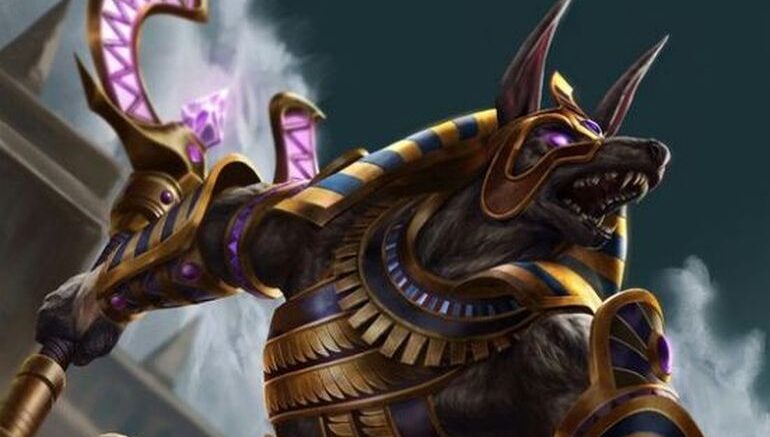
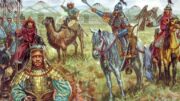



Be the first to comment on "Anubis: History And Mythology Of The Ancient Egyptian Jackal God"